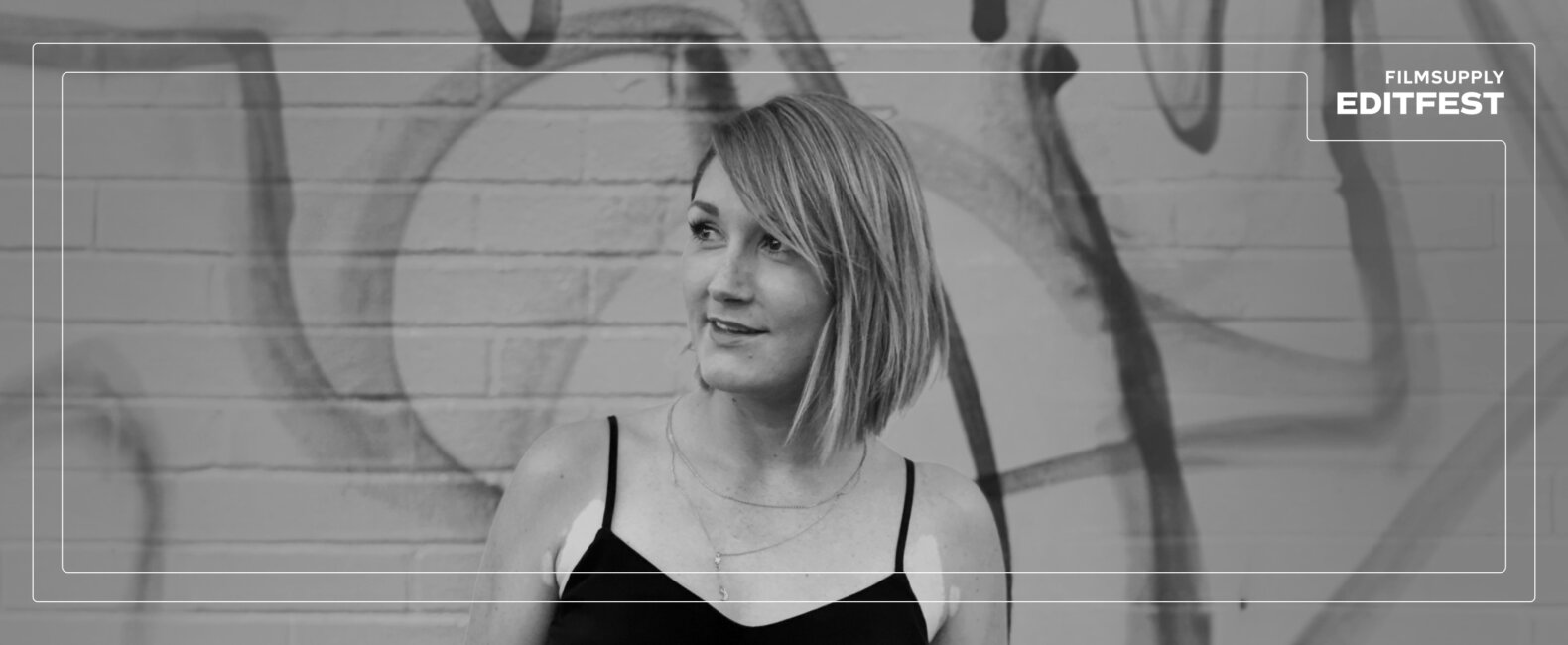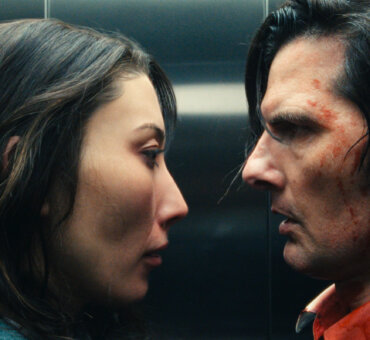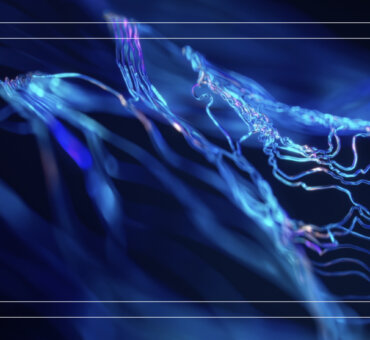New York-based editor Lizzy Graham’s well-rounded career spans commercials for global brands like Spotify, Ford, and adidas, multiple films throughout the festival circuit, and even an Academy Award-winning short film, The Phone Call. This year, she’ll put that industry-leading eye to work on the judging panel for Filmsupply Editfest. You can find further information about Filmsupply Editfest here.
Read her exclusive interview below for Graham’s valuable insights for aspiring editors and to learn more about her creative process.
Filmsupply: What moment sparked your passion for editing?
Lizzy Graham: In my last year of school, while studying for my A-levels, I was lucky enough to intern for two weeks at an offline edit house. Marc Langley and Pierre Fletcher were the two lead editors there and were kind enough to give their time to teach me about advertising and post-production. I had very limited knowledge of the industry before those two weeks, but by the end of it, I had been shown every part of the post-production process, from dailies, edits, sounds, and grades to finish and delivery. I was taken aback by how much work goes into producing the ads we see on TV, and back then, it was intriguing. I was drawn in by the process and, over time, developed a passion.
Walk us through your experience working on the Academy Award-winning short film The Phone Call.
The Phone Call was unexpected—I had never done anything like it. It was born from working back-to-back jobs with Mat Kirkby through RSA at BBH London. He squeezed in the shoot for the film in between two KFC jobs and used the same crew for all of it. I was on set for the shoot, which was incredible. Sally Hawkins was mesmerizing and had everyone captivated—you could have heard a pin drop! The edit was about a month long from load to lock. Every layer we added just elevated the suspense and heartache. We’d watch it down and make sure we were all feeling what we needed to feel—the sorrow and the desperation—but also taking you on a journey and shifting who was actually saving who. The experience made me fall in love with editing short films. It meant I could take all of the skills, tips, and tricks we applied to this longer-form piece and see how to apply them to my work in ad land. It also helped me get over to New York.
What elements are essential for crafting a compelling story?
Timing can make or break an edit. Where your cut points are can be the difference between a message landing or not. Collaboration is also essential. For instance, by working closely with the director and agency, you can explore alternative avenues that you may not have thought of and ultimately achieve a better outcome.
What part of the editing process do you love the most?
The first day on a project. Getting the dailies and selecting while mentally seeing the edit come together is exciting, even more so once you cut it together, it all falls into place just how you thought it would. Oh, and client approval is always good.
How do you adapt your editing style to suit different projects?
The style of the piece determines the approach. If there’s a punch line, you must ensure it lands. Timing is paramount. Music videos should feel engaging, keep the viewers in, and make them feel something. Similarly, film is all about bringing the viewer on a journey. I learned a lot about timing on The Phone Call and how to create suspense to land the emotional payoff. Sometimes, that’s holding on a shot a beat longer than you might think you need. You ultimately want the viewer to feel something and have a good reaction. I cut a spot for Ad Council’s Adopt a Teen campaign. Directed by Charli Mysak for Barbarian NY, the ad just brings a tear to the eye, and it’s all thanks to holding long enough on the last few shots.
Have any editors or filmmakers inspired you throughout your career?
The first person that was a huge inspiration was Marc Langley. I was his runner straight out of school, and when I joined The Firm, he was editing a Vodafone spot shot by Michael Hausman. The whole piece was almost all shot MOS, and Marc and his assistant laid out all the sound design. It was incredible to watch it come together. The director cut was around five minutes long, and then Marc had the task of delivering all of the cut downs. It’s amazing when it’s such an epic story to whittle it down to a 60 and 30-second spot, and it all still tracks and hits home.
What’s one piece of editing advice that has stuck with you over the years?
One bit of advice actually has less to do with editing and more to do with client relations. Ian Weil once said, ‘You need to be nice to everyone on your way up as you never know who you will need on the way back down.’
What advice would you give to new editors aiming to work on advertising spots?
Be patient—simple as that. The skills you learn as an assistant are invaluable and go way beyond knowing how to use the software. It’s people skills—being able to read the room. Choosing one shot over another. Knowing why that shot needs ten more frames. Aside from that, watch and listen. I learned so much from every editor I assisted, as everyone edits differently. Be a sponge and soak up all that knowledge. I can guarantee it will all come in handy!
How do you balance your creative vision with client expectations?
When you start a project, you take on board the vision outlined in the boards’ scripts, but inevitably, things evolve when you go through the footage. What might have seemed the best approach to the client on paper can take a different turn in the edit. You have to follow your gut and trust your instincts. If it feels off to you, it will feel off to them. It’s about integrating their needs with my unique approach and finding the spot where our visions align.
Why do you recommend Filmsupply as a resource for editors and post houses?
Filmsupply has been vital to many projects I have worked on, especially when concepting and working on UGC-based projects. You can always find the shots you are looking for, as there is such a diverse range in the database. When I was an assistant, I would work on rip films, and it was always pulling shots from films I had to load from DVD and VHS. In contrast, Filmsupply means I have access to professionally shot content at high resolution that you are unlikely able to find elsewhere.






